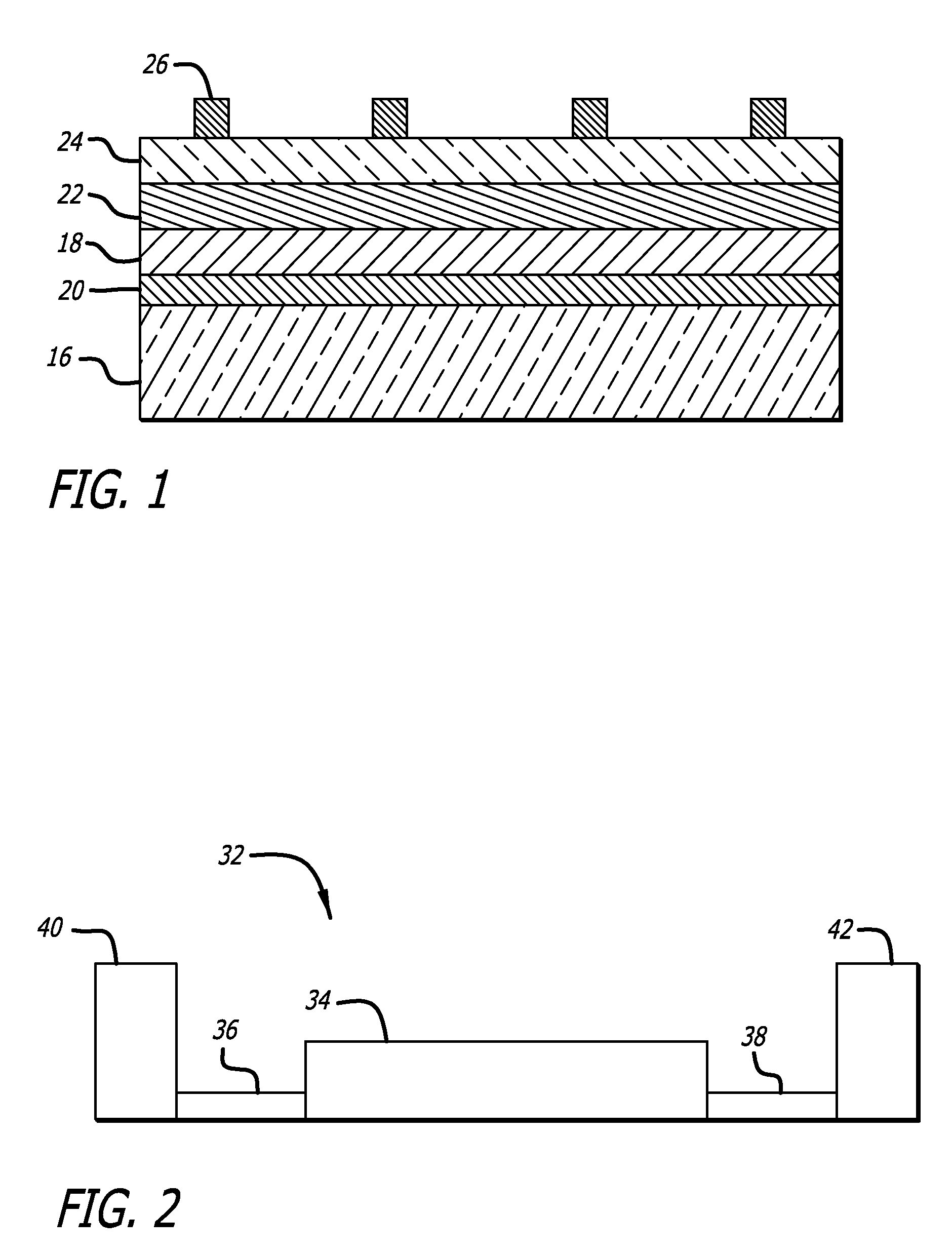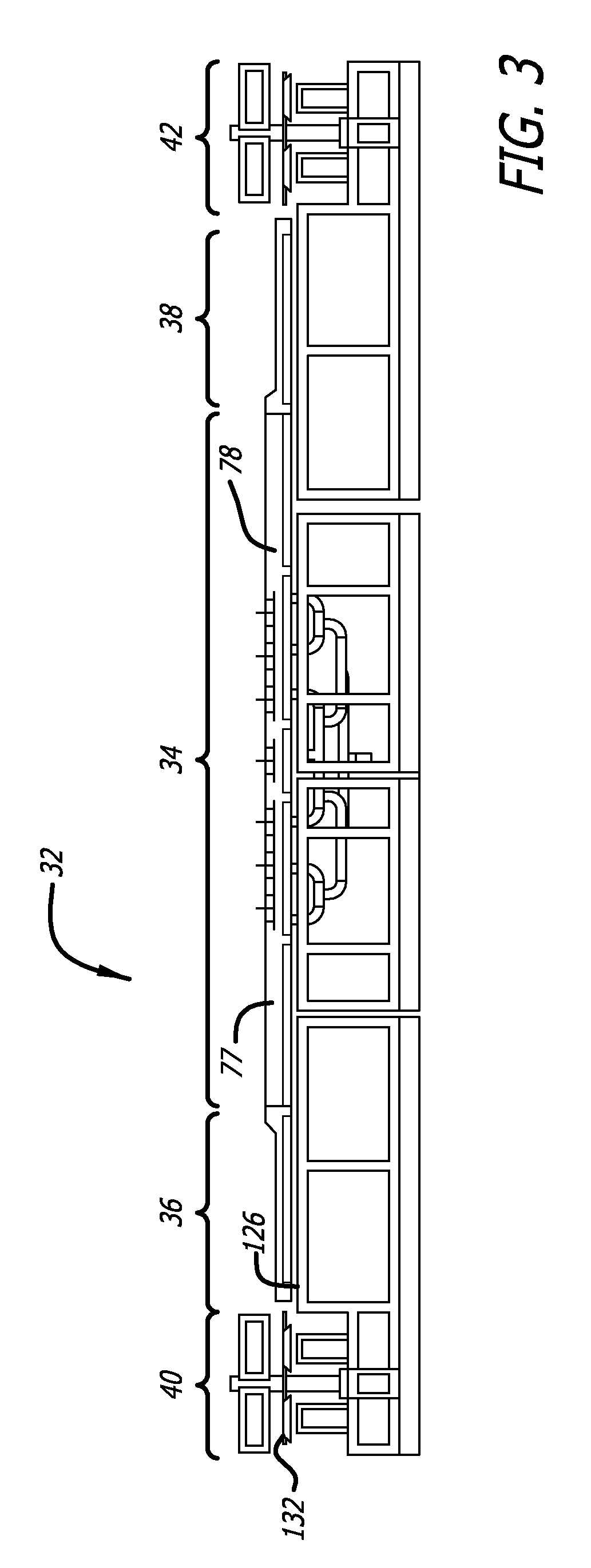Chemical vapor deposition method and system for semiconductor devices
a technology of chemical vapor deposition and semiconductor devices, which is applied in the direction of sustainable manufacturing/processing, final product manufacturing, coatings, etc., can solve the problems of difficult to achieve electric power generation using silicon-based solar cells, difficult to achieve parity, and high material and manufacturing costs of such solar cells
- Summary
- Abstract
- Description
- Claims
- Application Information
AI Technical Summary
Benefits of technology
Problems solved by technology
Method used
Image
Examples
Embodiment Construction
[0029]A typical general structure of a thin film solar cell, as well as one that may be made by using the method and system of the present invention, is shown in FIG. 1. The device is fabricated on a base that includes a sub-layer 16, that may typically be made, as shown, of a glass material, or alternatively of other material, such as a polymer, a suitable ceramic material, or a metal foil. A p-type absorber film 18 is deposited over a conductive layer 20, e.g., a metallic layer made of molybdenum (Mo), which acts as the back ohmic contact to the solar cell, and which is a coating for the sub-layer of the base. The sub-layer 16 and its coating 20, thus, may together be regarded as a base.
[0030]An n-type film 22 is formed on the p-type film. This, of course, forms a p-n junction that is critical to the performance of such a solar cell. Then, a window layer 24, generally transparent to the solar radiation of concern, is formed, through which radiation enters the device. The solar cel...
PUM
| Property | Measurement | Unit |
|---|---|---|
| thicknesses | aaaaa | aaaaa |
| thicknesses | aaaaa | aaaaa |
| thicknesses | aaaaa | aaaaa |
Abstract
Description
Claims
Application Information
 Login to View More
Login to View More - R&D
- Intellectual Property
- Life Sciences
- Materials
- Tech Scout
- Unparalleled Data Quality
- Higher Quality Content
- 60% Fewer Hallucinations
Browse by: Latest US Patents, China's latest patents, Technical Efficacy Thesaurus, Application Domain, Technology Topic, Popular Technical Reports.
© 2025 PatSnap. All rights reserved.Legal|Privacy policy|Modern Slavery Act Transparency Statement|Sitemap|About US| Contact US: help@patsnap.com



